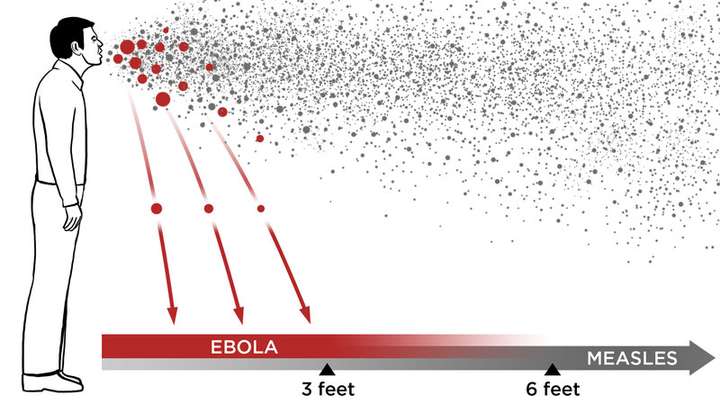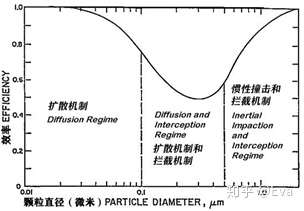"Microbes such as bacteria and viruses do not exist alone in the air. They adhere to dust and droplets to form aerosols. Microbial aerosol particles can be filtered by filter materials ..."
The virus is released into the air through droplets or nuclei produced by coughing, sneezing, talking, etc. Generally speaking, the spread distance of droplets is about 1 meter, and the spread distance is longer when sneezing and coughing; the droplet core is smaller and can float in the air for a long time and a long distance with aerosol. In the picture below, red is droplets and gray is droplet cores.

The filtration efficiency of non-oily particles in medical protective masks, N95, KN95 and medical surgical masks can be understood as: the percentage of filtration of non-oily particles with aerodynamic mass median diameter of 0.3 μm.
The diameter of the droplets is generally greater than 5 μm, and the diameter of the droplet core is less than or equal to 5 μm, generally greater than 1 μm. Therefore, both droplets and droplet cores can be easily blocked by masks with non-oily particle filtration efficiency ≥95.
The filter material is not a sieve, it is not a simple blocking particle, but a comprehensive effect through diffusion effect, interception effect, inertial effect, gravity effect, and electrostatic effect. Masks filter non-oily particles not because the smaller the particles, the more difficult to filter , but a concave curve . The lowest point (the most difficult to filter) is about 0.3μm particles, so the filtering efficiency of masks is generally based on the measurement of particles about 0.3μm .

In China's GB19083-2010, GB2626-2006, YY0469-2011 three standards for non-oily particle filtration efficiency indicators are measured using the median particle diameter 0.075μm ± 0.020μm (equivalent to aerodynamic mass median diameter 0.24μm ± 0.06μm ) NaCl aerosol particles.
US NIOSH 42 CFR 84 non-oily particle filtration efficiency index test uses a NaCl aerosol (particles) with a median particle diameter of 0.075 μm (equivalent to aerodynamic mass median diameter of 0.3 μm ).
